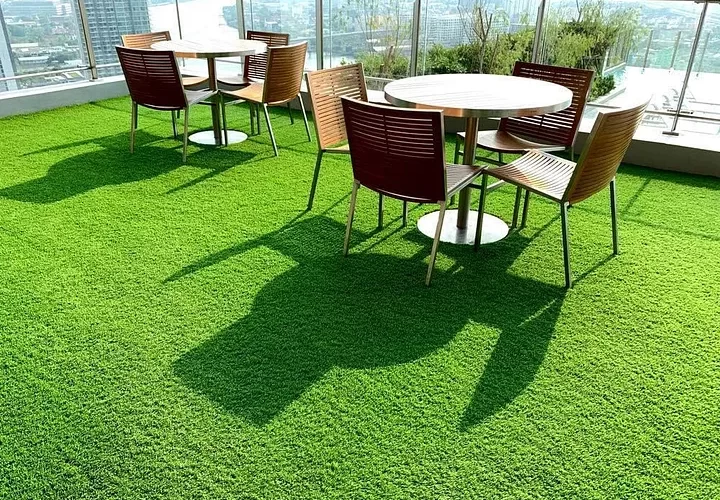Artificial grass carpet and natural grass both offer aesthetic appeal, but they differ significantly in terms of maintenance, cost, and environmental impact. Understanding these differences can help you make an informed decision based on your specific needs and preferences.
Maintenance
One of the most significant advantages of artificial grass carpet is its low maintenance. Unlike natural grass, which requires regular mowing, fertilizing, and watering, artificial grass needs minimal upkeep. It doesn’t grow, so you don’t need to worry about trimming or dealing with overgrown patches. Cleaning involves occasional brushing to keep the fibres upright and the removal of debris, along with periodic rinsing to wash away dust or spills. In contrast, natural grass demands ongoing care to maintain its health and appearance, including frequent watering, weeding, and pest control.
Cost
When comparing costs, artificial grass typically has a higher initial investment than natural grass. The upfront cost includes purchasing the grass and installation, which can be substantial. However, this cost is offset over time by the savings on water bills, fertilizers, and lawn care equipment. Natural grass has lower initial costs but incurs ongoing expenses for maintenance and water, which can add up over the years. In regions where water conservation is a concern, artificial grass offers a cost-effective solution in the long run.
Environmental impact
The environmental impact of artificial grass versus natural grass varies. Artificial grass does not require water, which is beneficial in drought-prone areas or regions with water restrictions. It also eliminates the need for chemical treatments, reducing pollution from pesticides and fertilizers. However, artificial grass is made from synthetic materials, which may not be biodegradable and can contribute to plastic waste.
Natural grass, instead, supports local ecosystems by providing habitats for insects and birds. It also absorbs carbon dioxide and releases oxygen, contributing to a healthier environment. However, natural grass requires water and chemicals for maintenance, which can impact the environment, especially in areas facing water scarcity or pesticide pollution.
Durability and longevity
Artificial grass is highly durable and designed to withstand heavy foot traffic, making it suitable for areas with high usage. It typically lasts between 10 to 15 years, depending on quality and maintenance. Natural grass, while resilient, can suffer from wear and tear, especially in high-traffic areas, leading to bare patches and uneven growth.


